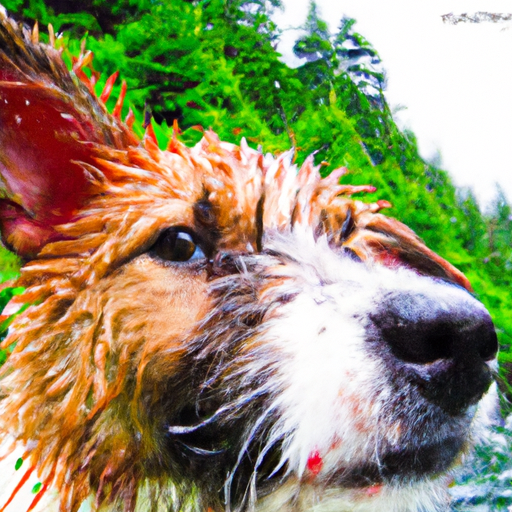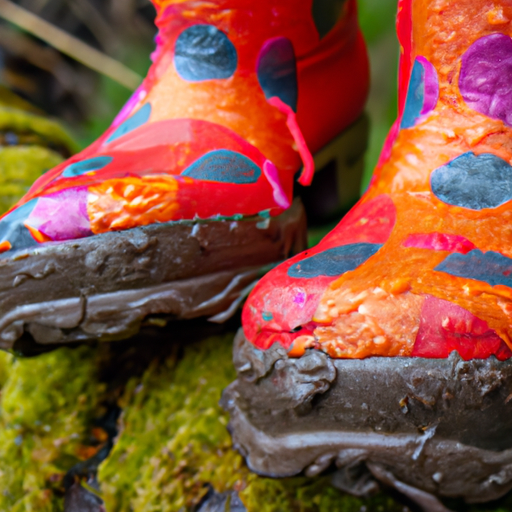Are you looking for a creative and exciting way to keep your furry friend entertained? Look no further than the Fun and Challenging Indoor Obstacle Course for Dogs! This unique course is designed to provide endless fun and mental stimulation for your beloved canine companion. Whether your dog is a natural athlete or just loves to explore, they are sure to enjoy navigating through tunnels, jumping over hurdles, and weaving through poles. Not only does this obstacle course provide great exercise for your pup, but it also helps to enhance their problem-solving skills and agility. Get ready to have a blast alongside your four-legged friend as you conquer the challenges of this indoor adventure!
Setting Up the Course
Choosing the Right Location
When setting up an indoor obstacle course for your dog, it's important to choose the right location. You'll want to have enough space to accommodate all the stations and ensure that there are no hazards or breakable items nearby. A large living room or basement can often work well for this purpose. Make sure the area is clear of any furniture or obstacles that could impede your dog's movement.
Clearing the Space
Before you start setting up the course, it's essential to clear the space of any unnecessary items. This includes picking up toys, moving furniture, and making sure there are no loose objects that could be knocked over during the course. By creating a clean and clutter-free environment, you'll ensure that your dog can navigate through the course without any obstacles in their way.
Gathering Materials
To set up the obstacle course, you'll need to gather various materials. This may include items such as hurdles, tunnels, weave poles, balance boards, toys, and treats. It's essential to choose materials that are safe and appropriate for your dog's size and breed. Consider using lightweight and easily adjustable equipment so that you can customize the difficulty level and adapt it as your dog progresses through the course.
Creating Different Stations
Once you have chosen the location, cleared the space, and gathered the materials, it's time to set up the different stations for your obstacle course. Each station will focus on a specific skill or challenge for your dog to overcome. It's essential to create a variety of stations that target different aspects of your dog's physical and mental abilities. This will help keep the course engaging and provide a well-rounded training experience for your furry friend.
Station 1: Jumping Obstacles
Setting Up Hurdles
For the jumping obstacles station, you'll need to set up hurdles at varying heights. You can use adjustable hurdles or create your own using lightweight materials such as PVC pipes or wooden dowels. Start with lower heights and gradually increase the difficulty as your dog becomes more comfortable and confident with jumping. Make sure to space the hurdles apart appropriately to allow your dog enough room to clear them safely.
Teaching the Jumping Command
Before starting the course, it's important to teach your dog a jumping command. This can be a simple cue like “jump” or “over.” Use positive reinforcement techniques such as treats and praise to encourage your dog to jump over the hurdles. Start with lower heights and gradually raise them as your dog becomes more proficient. It's essential to be patient and provide plenty of encouragement and rewards during the training process.
Increasing the Difficulty
As your dog becomes more proficient at jumping over hurdles, you can increase the difficulty by adding additional obstacles or raising the heights of the hurdles. Consider incorporating different types of jumps, such as long jumps or triple jumps, to challenge your dog's abilities. Always prioritize safety and never push your dog beyond their comfort level. Remember to reward and praise your dog for their efforts and progress at each stage of the training.
Station 2: Tunnel Run
Assembling the Tunnel
The tunnel run station requires setting up a tunnel for your dog to navigate through. You can purchase a specifically designed dog tunnel or create your own using large cardboard boxes or flexible PVC pipes. Make sure the tunnel is sturdy and secure to prevent any collapses while your dog is inside it. Begin with a straight tunnel and gradually introduce curves to increase the challenge.
Introducing the Tunnel to the Dog
Once the tunnel is set up, it's time to introduce your dog to it. Allow your dog to explore the tunnel at their own pace, without any added pressure. Encourage them with treats, toys, or their favorite positive reinforcement rewards. It's crucial to create a positive association with the tunnel and make it a fun and exciting experience for your dog.
Adding Challenges
To make the tunnel run more challenging, you can add obstacles or distractions inside the tunnel. Placing toys or treats at the end of the tunnel can motivate your dog to navigate through it quickly. You can also introduce obstacles such as hurdles or ramps near the entrance or exit of the tunnel to add an extra layer of difficulty. As always, ensure your dog's safety throughout the course and provide plenty of praise and rewards for their efforts.
Station 3: Weaving Poles
Setting Up Weave Poles
The weaving poles station focuses on teaching your dog to weave through a series of poles. Set up several poles, such as PVC pipes or wooden dowels, in parallel fashion, leaving enough space for your dog to pass through. Start with a larger gap between the poles, and as your dog becomes more skilled, gradually decrease the distance.
Teaching the Weaving Command
Before beginning the weave poles exercise, it's crucial to teach your dog a weaving command. Use positive reinforcement techniques, such as treats or clicker training, to encourage your dog to weave through the poles. Start with a few poles and gradually increase the number as your dog becomes more proficient. Practice regularly and be patient, as it may take time for your dog to grasp the concept of weaving.
Improving Speed and Accuracy
As your dog becomes more comfortable with weaving through the poles, you can work on improving their speed and accuracy. Encourage your dog to move quickly through the poles by using verbal cues or hand signals. Gradually decrease the distance between the poles to make the weaving more challenging and require increased concentration from your dog. Remember to reward your dog with treats and praise for their efforts and progress.
Station 4: Balance Exercises
Creating a Balance Board
To set up the balance exercises station, you'll need to create a balance board. You can use a sturdy board and a PVC pipe or a wooden plank as the base. Make sure the board is stable and secure to prevent any accidents or injuries. Start with a lower incline or a shorter board and gradually increase the difficulty level as your dog gains confidence and improves their balancing skills.
Introducing Balance Exercises
Once the balance board is set up, introduce your dog to the concept of balancing. Allow them to step on the board with all four paws and encourage them with treats and praise. Start with short sessions and gradually extend the duration as your dog becomes more comfortable. Keep the sessions positive and enjoyable to make the experience pleasant for your dog.
Progressing to Advanced Balancing
As your dog becomes more proficient in balancing on the board, you can progress to more advanced exercises. This may include teaching them to sit, stand, or walk on the board while maintaining their balance. You can also introduce additional challenges such as adding obstacles around the board or incorporating different surfaces to further enhance your dog's balancing skills. Always prioritize your dog's safety and progress at a pace that is comfortable for them.
Station 5: Scent Detection
Preparing Scented Objects
For the scent detection station, you'll need to prepare scented objects for your dog to search for. Choose a specific scent that your dog can easily differentiate, such as a small vial of essential oil. Apply the scent to several objects, such as cloth squares or toys, and make sure to label or mark them to keep track of the scents.
Introducing the Scent
Before starting the scent detection exercise, introduce your dog to the scent. Allow them to sniff the scented object and associate it with positive experiences, such as receiving treats or playing with their favorite toys. Repeat this process several times to reinforce the connection between the scent and the reward.
Expanding the Search Area
Once your dog has become familiar with the scent, you can expand the search area. Hide the scented objects in various locations around the course and encourage your dog to find them using their sense of smell. Start with simple hiding places and gradually increase the difficulty by choosing more challenging spots or adding distractions. This exercise will provide mental stimulation for your dog and enhance their natural scent detection abilities.
Station 6: Fetch and Retrieve
Choosing the Right Toys
To set up the fetch and retrieve station, choose toys that are safe and suitable for your dog's size and breed. Consider using toys that are easy to throw and retrieve, such as balls or Frisbees. Make sure the toys are durable and can withstand your dog's play style.
Teaching the Fetch Command
Before starting the fetch and retrieve exercise, it's important to teach your dog the fetch command. Start by encouraging your dog to pick up the toy using positive reinforcement techniques. Reward them with treats or praise when they pick up the toy and bring it back to you. Gradually increase the distance of the throw and reinforce the fetch command each time.
Adding Retrieval Challenges
As your dog becomes more proficient in fetching and retrieving the toy, you can add challenges to make the exercise more engaging. This may include adding obstacles or changing the throwing angle to require different strategies from your dog. Incorporate variations such as tossing the toy up in the air or throwing it in different directions to keep your dog on their toes. Always prioritize your dog's safety and never overexert them during the exercise.
Station 7: Climbing Stairs
Finding Staircase Options
For the climbing stairs station, look for a suitable staircase in your home or consider purchasing a pet-friendly ramp or stairs specifically designed for dogs. Ensure that the staircase or ramp is stable and secure to prevent any accidents or injuries. Start with a few steps or a small incline and gradually increase the difficulty as your dog becomes more comfortable.
Gradually Introducing Stairs
When introducing your dog to stairs, take it slow and allow them to explore at their own pace. Use treats or toys to encourage them to climb up and down the stairs. Provide plenty of positive reinforcement to create a positive association with the stairs. If your dog is hesitant, you can use a leash or a confident dog buddy to guide them and boost their confidence.
Adding Variations
Once your dog has become comfortable with climbing stairs, you can add variations to make it more challenging. This may include using different types of stairs, such as open or spiral stairs, or incorporating obstacles or distractions near the stairs. Always prioritize your dog's safety and well-being during the exercise and provide plenty of encouragement and rewards for their progress.
Station 8: Command Training
Reviewing Basic Commands
The command training station focuses on reinforcing your dog's basic commands and introducing new tricks. Start by reviewing the basic commands, such as sit, stay, lie down, come, and heel. Use positive reinforcement techniques to reward your dog for following the commands correctly. Practice these commands regularly to maintain your dog's obedience skills.
Introducing New Tricks
Once your dog is proficient in the basic commands, you can introduce new tricks to keep their training varied and engaging. This may include teaching them to roll over, shake hands, play dead, or any other fun and interactive tricks. Break down the tricks into smaller steps and reward your dog for their progress at each stage. Be patient and practice regularly to reinforce the new tricks effectively.
Testing the Dog's Skills
To test your dog's skills at the command training station, create scenarios that require them to follow multiple commands or perform a series of tricks in a specific order. This will help challenge their memory and obedience skills. Provide plenty of rewards and praise for their efforts and progress. Remember that training should always be a positive and enjoyable experience for your dog.
Station 9: Mental Stimulation
Using Treat Puzzles
The mental stimulation station focuses on providing your dog with challenges that require problem-solving. Treat puzzles are a fantastic way to engage your dog's brain and alleviate boredom. Choose puzzles that are suitable for your dog's size and difficulty level. Fill the puzzles with treats and encourage your dog to navigate through them to find their rewards.
Adding Problem-Solving Challenges
Once your dog has mastered the treat puzzles, you can add additional problem-solving challenges. This may include hiding treats in various locations around the course or using toys that require manipulation or interaction to access the treats. The goal is to provide mental stimulation and encourage your dog to think and solve problems on their own.
Incorporating Olfactory Games
To further enhance the mental stimulation, incorporate olfactory games into the course. This can include hiding scented objects or treats in different locations and encouraging your dog to use their sense of smell to locate them. You can also create scent trails or scent discrimination exercises to challenge your dog's scent detection abilities. These games will engage your dog's natural instincts and provide a rewarding mental workout.
In conclusion, setting up an indoor obstacle course for your dog can be a fun and challenging activity that provides both physical and mental stimulation. By following the steps outlined in this article, you can create a comprehensive course that targets various skills and abilities. Remember to always prioritize your dog's safety, use positive reinforcement techniques, and make the training sessions enjoyable for your furry friend. With time and practice, your dog will thoroughly enjoy navigating through the obstacle course and gaining confidence along the way.






